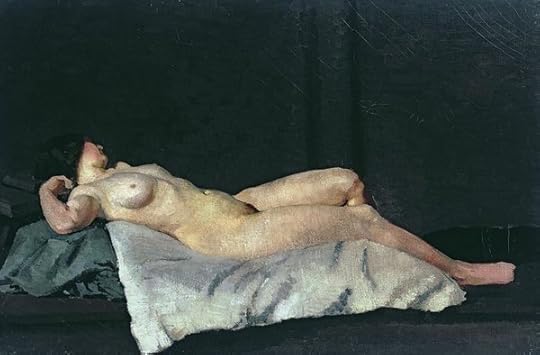What do you think?
Rate this book


Kindle Edition
First published June 22, 2017
Wood is a pleasant thing to think about. It comes from a tree; and trees grow, and we don’t know how they grow. For years and years they grow, without paying any attention to us, in meadows, in forests, and by the side of rivers—all things one likes to think about. The cows swish their tails beneath them on hot afternoons; they paint rivers so green that when a moorhen dives one expects to see its feathers all green when it comes up again. I like to think of the fish balanced against the stream like flags blown out; and of water-beetles slowly raiding domes of mud upon the bed of the river. I like to think of the tree itself: first the close dry sensation of being wood; then there is the grinding of the storm; then the slow, delicious ooze of sap. I like to think of it too on winter’s nights standing in the empty field with all leaves close-furled, nothing tender exposed to the iron bullets of the moon, a naked mast upon an earth that goes tumbling, tumbling, all night long. The song of birds must sound very loud and strange in June; and how cold the feet of insects must feel upon it, as they make laborious progresses up the creases of the bark, or sun themselves upon the thin green awning of the leaves, and look straight in front of them with diamond-cut red eyes. One by one the fibres snap beneath the immense cold pressure of the earth, then the last storm comes and, falling, the highest branches drive deep into the ground again. Even so, life isn’t done with; there are a million patient, watchful lives still for a tree, all over the world, in bedrooms, in ships, on the pavement, lining rooms where men and women sit after tea smoking their cigarettes. It is full of peaceful thoughts, happy thoughts, this tree. I should like to take each one separately—but something is getting in the way....Where was I? What has it all been about? […] I can’t remember a thing. Everything’s moving, falling, slipping, vanishing...There is a vast upheaval of matter. (19-21)
Where was Lucy now? she wondered.
Christ. It just poured through, didn’t it? This slippery thing we called mind. Words and pictures gathering and wheeling like murmurations of starlings. No centre, no purpose, just shapes against the dusk.
She had believed, once upon a time, that it would all become clear, that she would finally reach a point on the graveled strand where she could turn and see it whole. (13)
